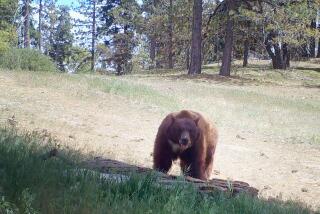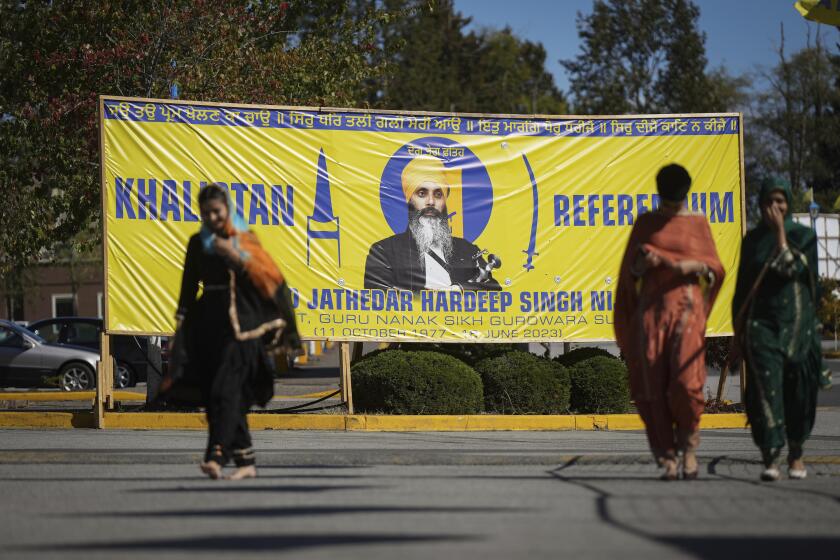Opponents keep a close eye on Florida’s first bear hunt in 2 decades
It took three shots for Larry Dupree to bring down his bear.
Walking through the woods early Saturday morning in eastern Collier County, just northwest of the Everglades, Dupree saw the bear about 100 yards away, he said in an interview. It was the morning of Florida’s first bear hunt in 21 years.
He raised his rifle and fired.
“I hit it good the first time, and it kept running toward us,” said Dupree. “I took the second shot when it was 35 or 40 yards away. That’s when it fell in a ditch and tried to get up. I ran down there and finished it off at close range.”
Dupree brought his bear, a 200-pound female, to the check station at Okaloacoochee Slough State Forest, one of 33 stations run by the Florida Fish and Wildlife Conservation Commission. Up to 320 bears may be killed in the hunt statewide. The South Florida quota is 80. The one-week hunt may be ended early in a particular area if the quota is met.
The hunt, which was unsuccessfully challenged in court, is taking place under the eyes of opponents who organized to monitor the bears being brought in.
“I think it’s immoral to kill a bear,” said Jim Woodard of Miami, standing across a dirt road from the Picayune Strand State Forest check station, which consisted of an awning, a folding table, a truck-mounted scale, a few wildlife officers and a biologist.
“There’s not a bear in Florida that had any experience being hunted,” Woodard said. “They’re not an animal that’s been conditioned to be afraid of people. As far as I’m concerned, it’s as sporting as shooting a garbage truck.”
The wildlife commission says the hunt will help manage the growing population of bears that has begun spilling into the suburbs. The commission scientists say the state’s bear population, which has risen sharply since the 1970s, can easily withstand a carefully controlled hunt.
Chuck O’Neal, one of the organizers of the effort to monitor the hunt, said more than 50 bears had been killed as of about 1 p.m. “They’re coming in steadily here,” he said, speaking by phone from a check station in Seminole County. “There’s a line of pickup trucks waiting to get weighed.”
The hunt rules prohibit killing any bears with cubs. O’Neal said he had reports of six lactating females being brought in. “It means she was nursing cubs,” he said.
Tammy Sapp, spokeswoman for the wildlife commission, said there had been no reports of any problems with the hunt.
By noon, hunters had brought three bears to the Picayune Strand check station. The five people monitoring the hunt there crowded around to photograph the scene and take notes as biologist Ross Scott recorded the animals’ weights and dimensions and took hair and tooth samples. The hunters did not appreciate the attention from the five hunt monitors and one reporter.
“Please don’t take my picture,” one woman said.
“I don’t want to talk to you,” said a man who brought in a bear.
In South Florida, the public hunting areas are the Okaloacoochee Slough, Picayune Strand and Spirit-of-the-Wild Wildlife Management Area — all in Collier and Hendry counties on the western edge of the Everglades.
Volunteers recruited through Facebook and other means are counting dead bears brought to check stations, photographing hunters and planning to drive through hunting areas immediately after their region’s quota is met to blast air horns announcing the hunt is over.
The state had planned to notify hunters by email and text message, which bear hunt opponents say is inadequate, considering the spotty cellphone coverage likely to prevail in remote hunting areas.
Florida’s black bear population has rebounded from a low of a few hundred in the early 1970s to an estimated 3,000-plus today. But the state has not completed a population survey since 2003. A new survey is being done now, and bear hunt opponents have criticized the state for going forward with the hunt without waiting for the results.
Hoy: Léa esta historia en español
More to Read
Start your day right
Sign up for Essential California for news, features and recommendations from the L.A. Times and beyond in your inbox six days a week.
You may occasionally receive promotional content from the Los Angeles Times.






